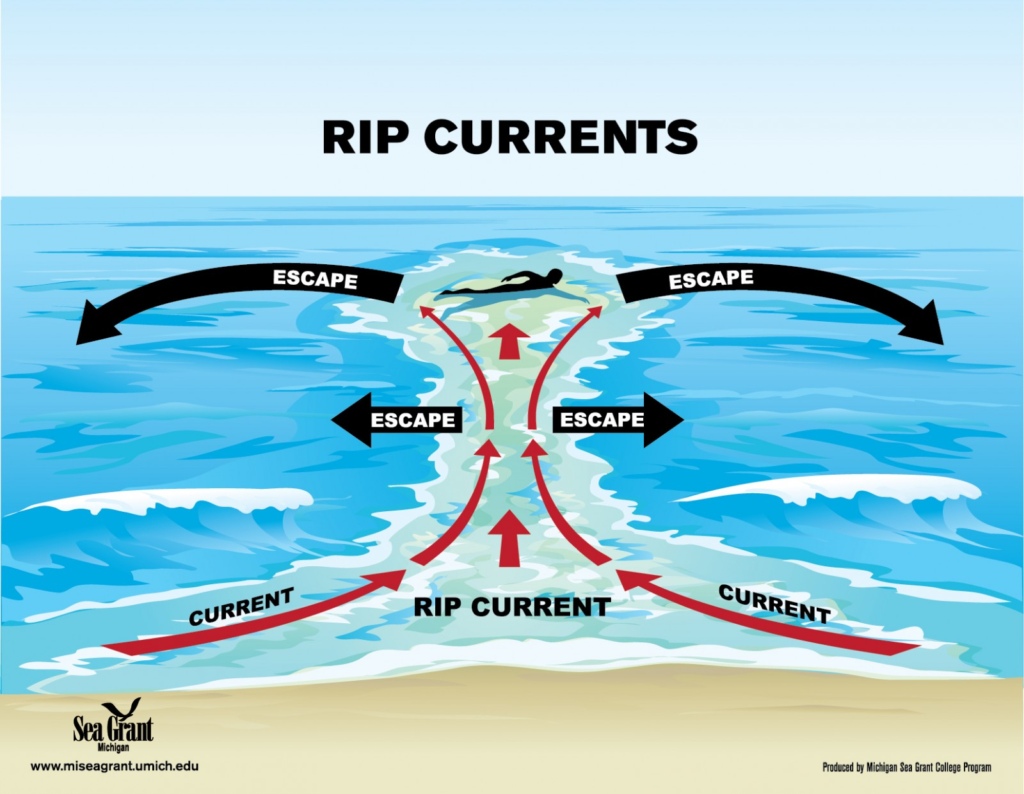
Image show how to escape if someone trapped by rip current.
Understanding Rip Currents
Recently, we were shocked by news of a tourist drowning after being caught in a rip current while vacationing at the beach. Therefore, this article is written to enhance general understanding of what rip currents are, so that we can all avoid being caught in these currents and safely enjoy beach outings.\r\nRip currents are powerful, narrow channels of fast-moving water that can pull even the strongest swimmers away from the shore and into deeper waters (NOAA, 2023). While they\'re a natural occurrence, they can catch beachgoers off guard if they\'re not aware of how to identify and navigate them safely. Rip currents may vary in width from very narrow to spanning hundreds of yards. Similarly, their seaward pull can differ; while some rip currents cease just beyond the breaking waves, others persist and can push hundreds of yards offshore. Rip currents often appear as darker, choppier patches of water amidst calmer surroundings. They typically form in breaks in sandbars or near structures like piers and jetties. Recognizing these visual cues can help beach enthusiasts steer clear of these hazardous areas.\r\nIf caught in a rip current, it\'s crucial to remain calm and remember to swim parallel to the shore rather than directly against the current\'s pull to escape its grip safely. Instead, remember these crucial tips:\r\n• Stay Calm: It\'s easier said than done, but panicking only expends energy and impairs judgment. Remind yourself that rip currents won\'t pull you under; they\'ll simply carry you away from shore.\r\n• Don\'t Fight It: While the instinct may be to swim directly back to shore, this can be futile and exhausting. Instead, swim parallel to the shoreline. Rip currents are often narrow, and swimming perpendicular to the current\'s flow can help you escape its pull.\r\n• Float and Signal: If swimming parallel feels too difficult, conserve energy by floating on your back and signaling for help. Remember, rip currents typically flow outward, so staying afloat and signaling increases your chances of being spotted by lifeguards or fellow beachgoers.\r\n• Know When to Ask for Help: There\'s no shame in seeking assistance. If you\'re struggling or feeling exhausted, signal for help immediately. Beaches often have lifeguards trained to handle these situations, so don\'t hesitate to call for aid.\r\nShare this knowledge with your friends and family to ensure everyone can safely enjoy beach settings and remain cautious of any rip current occurrences.\r\n

